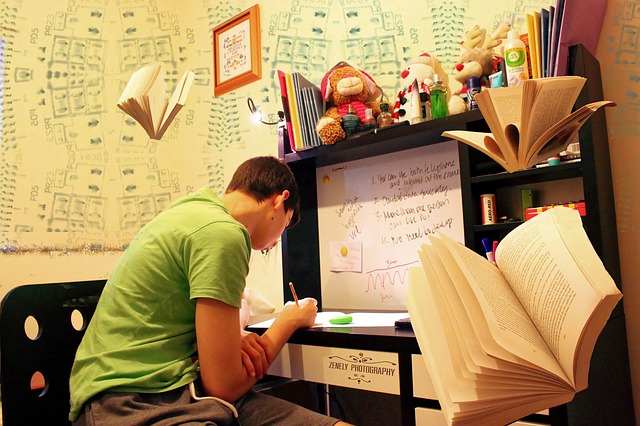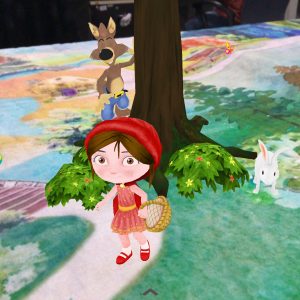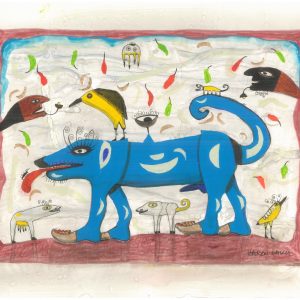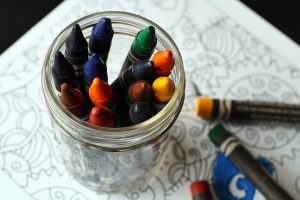We are all familiar with a rich text environment. Look into any primary classroom and you will see that it has some elements of a print rich environment.
What is a rich text environment?
Way back in 1989, researchers Neuman and Roskos conducted a study. They made a classroom environment more print rich. They studied the children before and after this change. They found that after the experience of print, children used twice as much print in their play than they did prior to the changes!
Parents can benefit from this knowledge and turn their children’s rooms into havens for learning by creating a rich text environment.
A rich text environment means much more than having books all around!
Here is how you can design a home environment to make it rich in text.
A space for displaying words, text and pictures
Every child will benefit from good display space. This is also the best way to create a print rich environment since you can display any kind of print you want here. Ideas for what to include here- age appropriate charts, labels, signs, timetables, quotes, written text and work by the children.

Soft boards, magnetic boards, white boards and chalk boards are the common ways to provide a space for display. Nowadays we also get chalkboard and magnetic paint. Use them on any blank wall or even the wardrobe doors!
Having boards on the wall is not in the only way to display texts and posters. Display spaces can be created quite innovatively. One can use colourful strings and ribbons across the room and display stuff on fancy pegs. Other spaces that could be utilised for display include the back of the door and the space above the study table.
It is also important to ensure that children are able to interact with the display. For example, a child is more likely to look at a chart that is placed at their height.
Label away!
When a child starts recognizing letters, it is the perfect time to label stuff in the room. This enhances and stimulates their interest in reading. However, one must make sure that the print is clear. Labelling is a classic example of how something small makes a big difference. If labelling is combined with images, it would have the maximum impact.

Playing around with colours for the labels is a good idea. For very young kids it is better to use solid colours like red or black for labelling their stuff. Later on, you can experiment with the numerous options that the markets are crowded with.
Reading nook
Well, this is something that obviously goes into making a space a rich text environment. A little reading corner will give the best advantage of a print rich environment. A good book-nook should be well lighted. Ideally, a child should be able to access books by himself. Books must be well organized. A seating space for cuddling up with a book is not so bad either! Rotate books regularly to ensure freshness.
Wall décor
Today, the market is filled with great wall décor options. For instance, wallpapers that have informational text or maps are great for a child’s room. Interactive wall décor through reusable wall stickers is another option. These come very handy there as they are repositionable. They can be peeled off as soon as the child outgrows a learning phase. They do not leave any damage to the walls. For example, an alphabets wall display can be easily converted to nursery rhymes or an animal recognition chart the following year. They are also versatile and can be used on everything from painted walls, furniture, glass, windows, and doors to bathroom tiles – so one can be creative with their display options. This is a great way to personalise a room and turn it into an interactive play area.
Map art
While map wallpapers are a good idea, map prints themselves work great. Maps look great in a child’s room and they have so much packed into them. In addition to all the print on the map, they open up literally a world of possibilities for discussion. Another subtle touch is to add a globe. It’s a great accessory to have.

The above changes can be incorporated in your child’s room or your own if you share space with your child. One can keep these factors in mind while redesigning or creating a new room. But, the most important thing to make these design ideas work is to use them for the way they are intended.
Different children respond to print-rich environments differently. For some merely having the stuff there is enough. For others, parents need to help the child interact with the room to benefit from it. A reading nook will work if your child actually sits there and reads as would a display space, if your child actually looks at what is put up there! As always, design works for those who help themselves! Well, here’s to a rich text environment then!
Here is a selection of posters for younger children:













